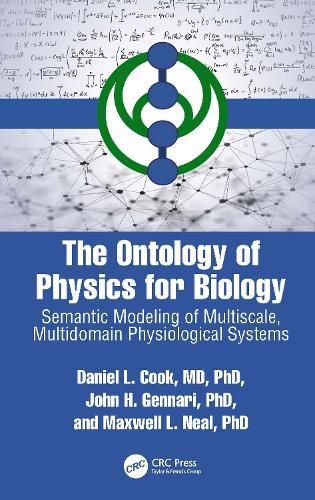Readings Newsletter
Become a Readings Member to make your shopping experience even easier.
Sign in or sign up for free!
You’re not far away from qualifying for FREE standard shipping within Australia
You’ve qualified for FREE standard shipping within Australia
The cart is loading…






This book introduces semantic representations of multiscale, multidomain physiological systems that link to qualitative reasoning and to quantitative analysis of biophysical processes in health and disease. Two major public health problems, diabetes and hypertension, serve as use-cases to illustrate the depth and rigor of such representations for logical inference and quantitative analysis. Central to this approach is the Ontology of Physics for Biology (OPB) that formally represents the foundations of classical physics and engineering system dynamics that are the basis for our understanding of biomedical entities, processes, and functional relationships.
Furthermore, we introduce OPB-based software for annotating and abstracting available biosimulation models for reuse, recombination, and for archiving of physics-based biomedical knowledge. We have formalized and leveraged physics-based biological knowledge as a working view of physiology and biophysics from three distinct perspectives: (1) biologists and biomedical investigators, (2) biophysicists and bioengineers, and (3) biomedical ontologists and informaticists. We present a logical and intuitive semantics of classical physics as a tool for mediating and translating biophysical knowledge among biomedical domains.
Daniel L. Cook, MD, PhD
John H. Gennari, PhD
Maxwell L. Neal, PhD
$9.00 standard shipping within Australia
FREE standard shipping within Australia for orders over $100.00
Express & International shipping calculated at checkout
This book introduces semantic representations of multiscale, multidomain physiological systems that link to qualitative reasoning and to quantitative analysis of biophysical processes in health and disease. Two major public health problems, diabetes and hypertension, serve as use-cases to illustrate the depth and rigor of such representations for logical inference and quantitative analysis. Central to this approach is the Ontology of Physics for Biology (OPB) that formally represents the foundations of classical physics and engineering system dynamics that are the basis for our understanding of biomedical entities, processes, and functional relationships.
Furthermore, we introduce OPB-based software for annotating and abstracting available biosimulation models for reuse, recombination, and for archiving of physics-based biomedical knowledge. We have formalized and leveraged physics-based biological knowledge as a working view of physiology and biophysics from three distinct perspectives: (1) biologists and biomedical investigators, (2) biophysicists and bioengineers, and (3) biomedical ontologists and informaticists. We present a logical and intuitive semantics of classical physics as a tool for mediating and translating biophysical knowledge among biomedical domains.
Daniel L. Cook, MD, PhD
John H. Gennari, PhD
Maxwell L. Neal, PhD